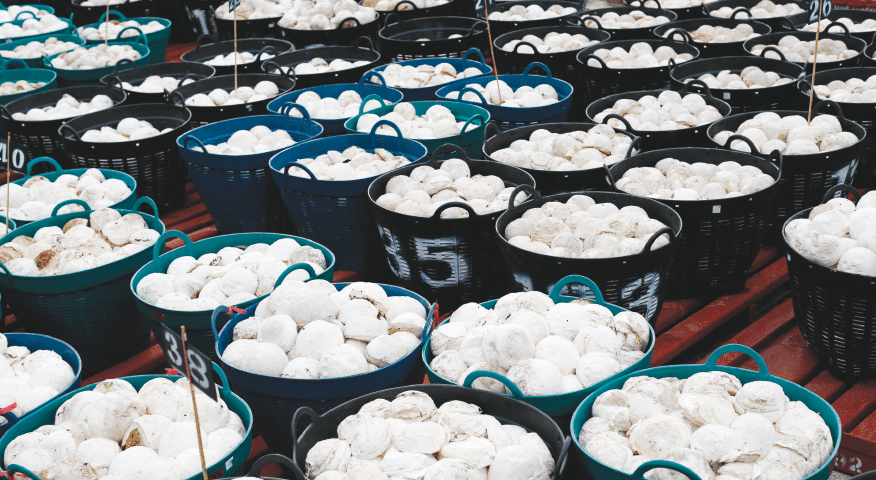SONGKHLA: Thailand, the world’s biggest rubber producer, which is now seeking to become a major rubber user as well, is going all out to get Malaysian companies to invest in its Rubber City Industrial Park here.
 Filepic of baskets filled with rubber at the central rubber market in Nong Khai, Thailand. Rubber prices have been falling in recent years, due to lower demand from the motor and tyre industries, which together use more than 70% of total natural rubber production. Photo by Reuters
Filepic of baskets filled with rubber at the central rubber market in Nong Khai, Thailand. Rubber prices have been falling in recent years, due to lower demand from the motor and tyre industries, which together use more than 70% of total natural rubber production. Photo by Reuters
Rubber City, launched by the state-owned Industrial Estate Authority of Thailand (IEAT) at the end of last year, will occupy about half of the 364ha Southern Region Industrial Estate.
IEAT assistant governor Suwatana Kmolwatananisa said the agency is seeking to attract Malaysian rubber industry players to invest in downstream activities.
Towards this end, the Thai Embassy in Malaysia has arranged for members of the Malaysian Rubber Products Manufacturers Association (MRPMA) to visit Rubber City at the end of next month, she told Malaysian journalists here last Thursday at a briefing, which was also facilitated by the embassy.
MRPMA committee members had also met with Thailand’s Ministry of Industry officials in Bangkok on March 11, she said.
Suwatana said the Thai authorities had also approached Malaysian companies that have already set up facilities in Thailand, such as glove manufacturer Top Glove Corp Bhd and condom maker Karex Bhd, to persuade them to expand their facilities to Rubber City.
She also disclosed that the authorities are in talks with a Malaysian bedding product manufacturing company about investing in the industrial estate. However, she declined to name the company.
Apart from attracting Malaysian investors, the IEAT is also seeking to get Chinese investors to come over to River City. It has organised roadshows in the eastern Chinese city of Qingdao.
The bulk of investments, of course, are expected to come from local investors.
Suwatana said since its launch, Rubber City has attracted an estimated 200 million baht (RM22.83 million) worth of investments from Thailand’s small and medium enterprises (SMEs).
“We have received about 20 letters of intent from Thai SMEs, which have expressed their intention to invest in Rubber City,” she said.
Rubber City hopes to have up to about 70 factories, with sizes ranging from 500 sq m to 1,500 sq m, with total investments of about eight billion baht.
Once operations start, production value is estimated to be six to 10 billion baht per year, with 7,000 jobs created.
Suwatana said Rubber City was launched with an aim of boosting domestic rubber consumption in the country by attracting midstream and downstream investors in the rubber industry.
She pointed out that last year, only 582,000 tonnes or 14% of rubber produced in Thailand were consumed domestically, while the remaining 86% or 3.7 million tonnes were exported.
Prime Minister General Prayut Chan-o-cha, when visiting Rubber City at the end of last year, said the government is seriously working to transform Thailand into a major rubber user in the world.
Thailand ranks as the world’s biggest rubber producer and exporter, followed by Indonesia and Malaysia.
Suwatana said Songkhla province, which is the second-largest rubber producer in Thailand with 330,240ha of planted area, is also the country’s main raw rubber producer. As such, manufacturers in Rubber City would be able to easily obtain access to raw material.
Suwatana admitted that the project may not be able to raise the price of rubber, but added that it would be able to generate jobs for the people, and boost up connecting services and businesses in the area.
Currently, the price of the latex from the farm gate is 44 to 45 baht per kg, higher than the 30 baht per kg late last year, but well below the record high of 120 baht in 2011.
Rubber prices have been falling in recent years, due to lower demand from the motor and tyre industries, which together use more than 70% of total natural rubber production.
According to Songkhla Chamber of Commerce president Somporn Siriporananon, the recent recovery in prices could be due to seasonal lower production.
He said Rubber City was an initiative to help stabilise rubber prices, adding that the chamber is working closely with the government to attract investors to the project.





























